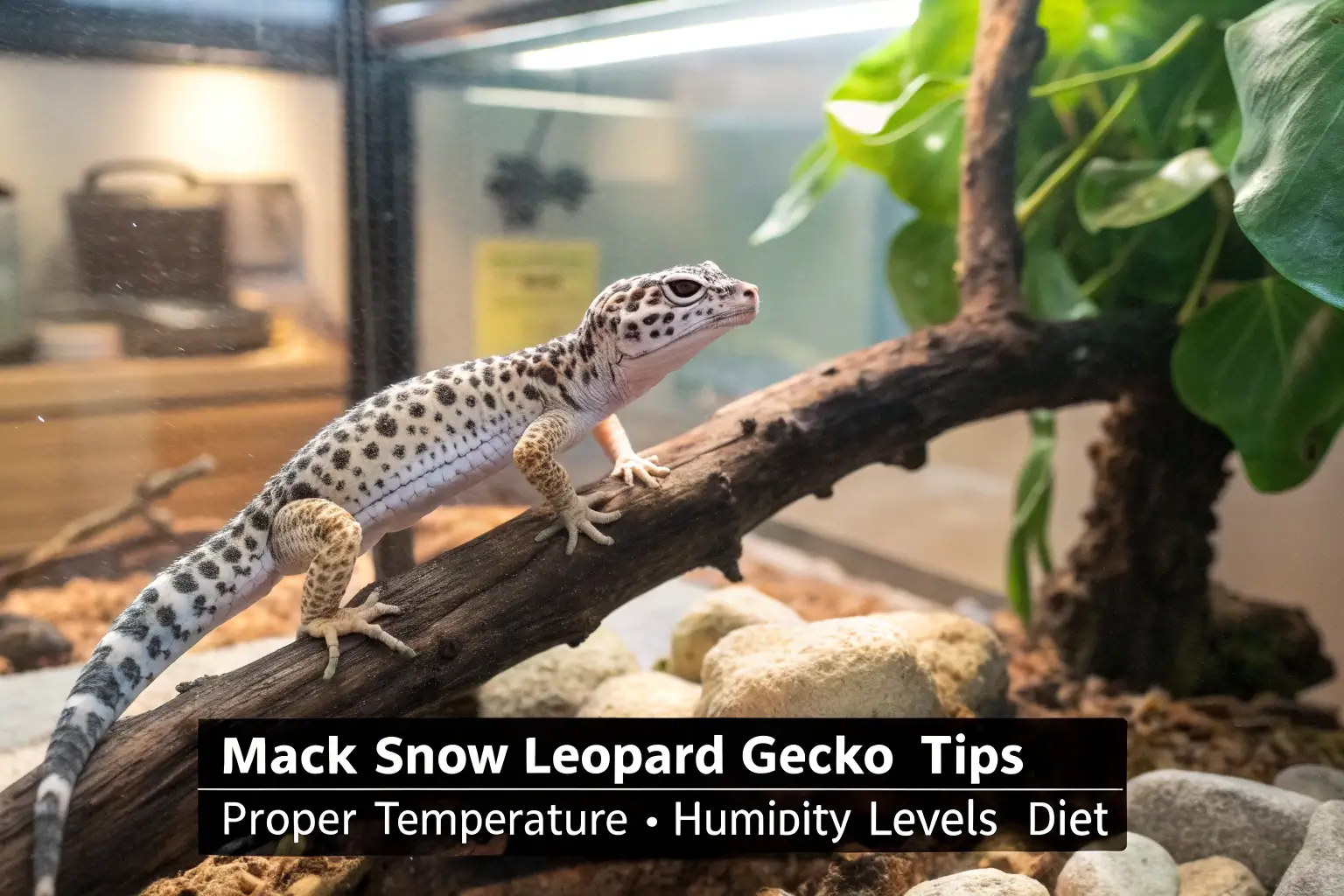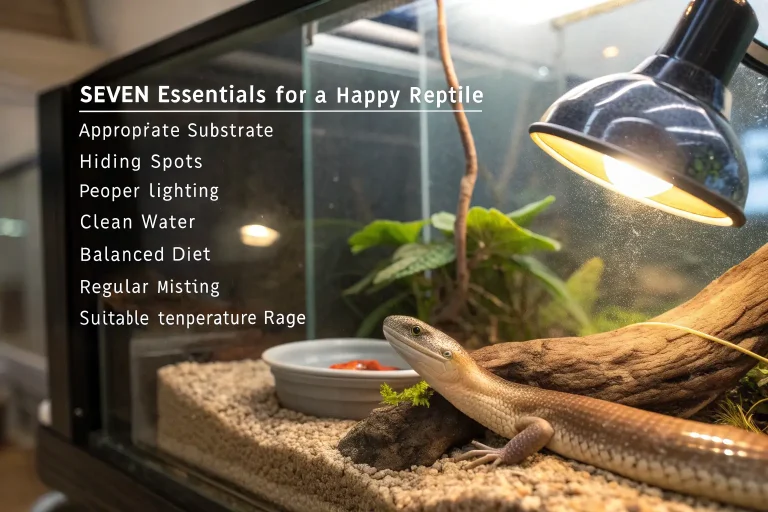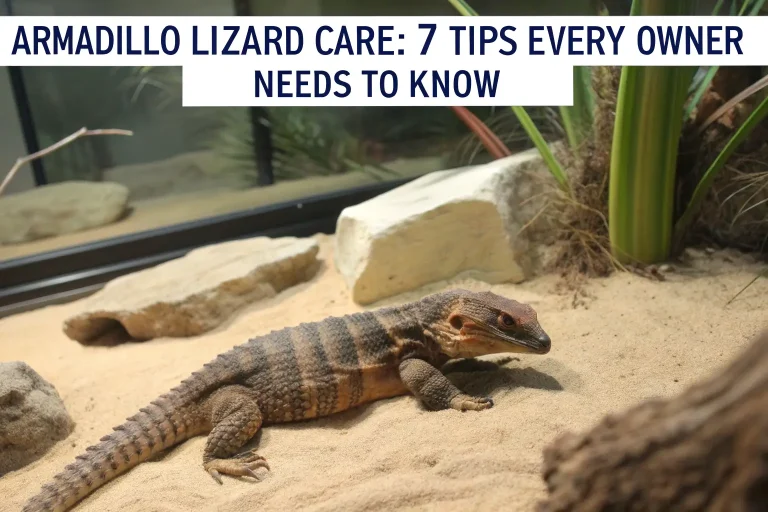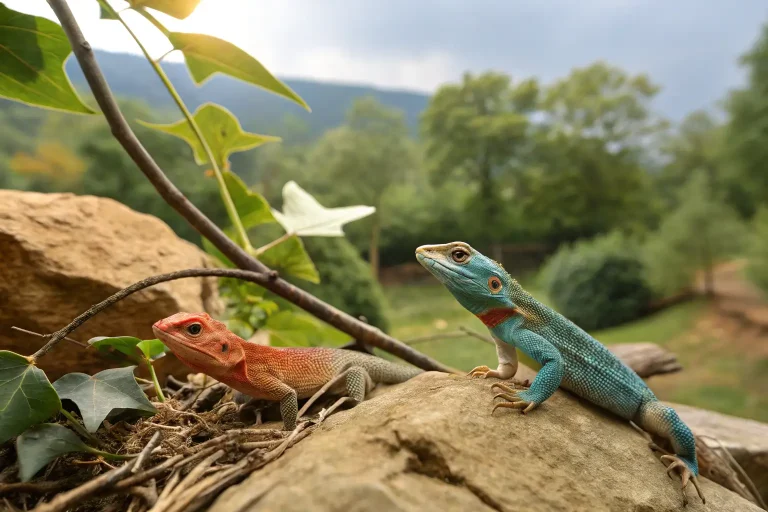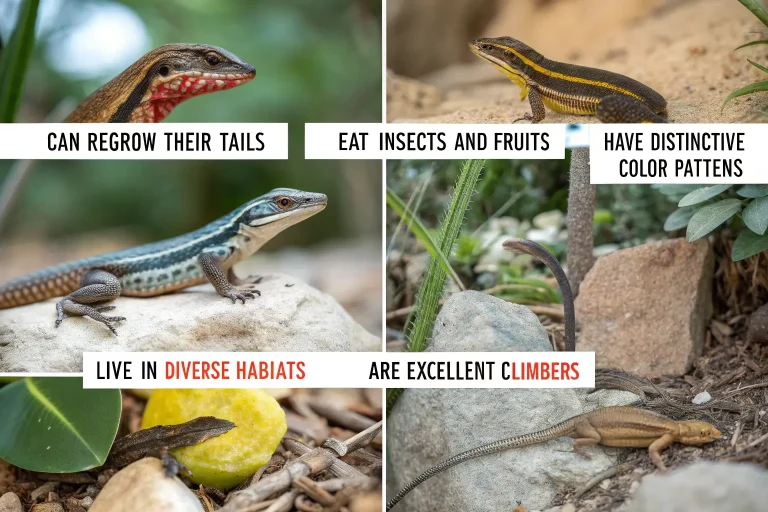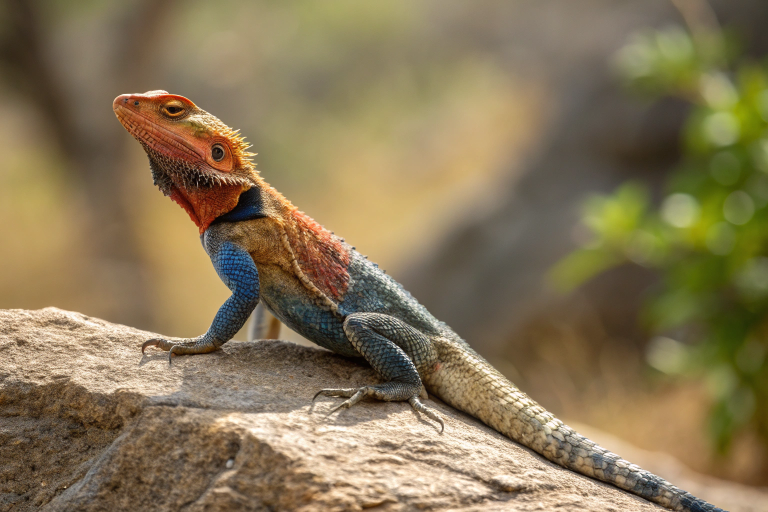Mack Snow Leopard Gecko Care: 7 Tips for a Happy Pet
Want a thriving mack snow leopard gecko? Get expert care tips to ensure your pet’s happiness and health. Perfect for beginners. Discover more inside!
Introduction
The mack snow leopard gecko has rapidly become one of the most sought-after morphs in the reptile hobby, captivating enthusiasts with its striking appearance and relatively straightforward care requirements. These beautiful geckos feature a stunning high-contrast pattern of black and white, reminiscent of snow leopards in the wild – hence their evocative name. If you’ve recently welcomed a mack snow leopard gecko into your home or are considering one as your next scaled companion, you’ve chosen an excellent reptile that can provide up to 20 years of fascinating interaction.
Understanding the specific needs of your mack snow leopard gecko isn’t just about keeping it alive—it’s about helping it thrive. As a morph of the popular Eublepharis macularius species, these geckos have particular genetic traits that influence both their appearance and, in some cases, their care requirements.
Did you know that despite their snow-associated name, mack snow leopard geckos actually originate from arid environments spanning Afghanistan, Pakistan, and parts of India? This fascinating contradiction between name and natural habitat highlights why proper care information is essential for new owners.
Species Overview
Scientific Name
The mack snow leopard gecko is a color morph of Eublepharis macularius, commonly known as the leopard gecko. It belongs to the family Eublepharidae, which distinguishes itself from many other gecko species by having moveable eyelids.
Physical Characteristics
Mack snow leopard geckos typically reach 8-10 inches in length at maturity, with females generally being slightly smaller than males. What truly sets them apart is their distinctive coloration—a beautiful blend of white or yellowish background with bold black patterns. Unlike the yellow and brown spots of traditional leopard geckos, the mack snow morph displays dramatically reduced yellow pigmentation, resulting in a predominantly white appearance with striking black markings.
Their bodies feature robust builds with thick tails that store fat reserves. Males can be identified by their pre-anal pores and hemipenal bulges, while females lack these characteristics. Both sexes possess the captivating lidded eyes that give these geckos their uniquely alert and expressive appearance.
Subspecies and Variants
The mack snow leopard gecko isn’t a subspecies but rather a genetic variation produced through selective breeding. First developed by reptile breeder Scott Stewart (who named it after himself—”Mack” being his nickname), this morph has become the foundation for numerous other stunning varieties.
When combined with other genetic traits, the mack snow gene produces variations like:
- Mack Snow Enigmas
- Super Mack Snows (when two mack snow genes are present)
- Mack Snow Albinos
- Mack Snow Eclipse
- Mack Snow Blizzards
Each combination creates unique patterns and coloration while maintaining the characteristic high-contrast appearance that makes these geckos so desirable.
Habitat and Distribution
Natural Habitat
In the wild, standard leopard geckos (the species from which mack snows were developed) inhabit arid and semi-arid regions characterized by rocky terrain, sparse vegetation, and underground burrows that provide shelter from extreme temperatures. They’re crepuscular creatures, meaning they’re most active during dawn and dusk when temperatures are moderate.
Geographic Range
The parent species of mack snow leopard geckos can be found across a broad range including eastern Afghanistan, Pakistan, northwestern India, and parts of Iran. These areas experience significant temperature fluctuations between day and night, a factor that’s critical to replicate in captivity.
Adaptations
Leopard geckos, including the mack snow morph, have evolved several remarkable adaptations:
- Fat storage in their tails to survive food scarcity
- Eyelids that protect against harsh desert conditions
- The ability to detach their tails when threatened (autotomy)
- Specialized toe pads that provide excellent grip without the adhesive properties seen in many other gecko species
In captivity, your mack snow leopard gecko will thrive when these natural adaptations are respected and accommodated through proper habitat setup.
Diet and Feeding Habits
What It Eats
Mack snow leopard geckos are insectivores that require a varied diet of live prey. Suitable feeder insects include:
- Crickets (the dietary staple for most leopard geckos)
- Dubia roaches (nutritious and easy to digest)
- Mealworms (good for occasional feeding)
- Superworms (higher in fat, best as treats)
- Waxworms (very high in fat, use sparingly as treats only)
- Hornworms (high moisture content, excellent for hydration)
It’s crucial to gut-load these insects 24 hours before feeding them to your gecko by providing them nutritious foods. This enriches their nutritional value for your pet.
Hunting Behavior
In captivity, mack snow leopard geckos retain their natural hunting instincts. They’re ambush predators that become alert at the sight of movement, tracking prey with their keen eyesight before lunging forward with surprising speed to capture insects. This hunting behavior provides essential mental stimulation, which is why live prey is strongly preferred over dead insects.
Dietary Needs
A proper feeding schedule for adult mack snow leopard geckos typically consists of:
- 6-8 appropriately-sized insects every 2-3 days
- All feeder insects should be dusted with calcium supplement (with D3 if you’re not using UVB lighting)
- A multivitamin supplement should be used once weekly
Juveniles require daily feeding of 5-7 small insects to support their rapid growth, with calcium supplementation at every feeding. Always provide fresh water in a shallow dish that your gecko can easily access.
Behavior and Social Structure
Social Behavior
Despite their placid appearance, mack snow leopard geckos are fundamentally solitary creatures. In the wild, they primarily come together for breeding purposes. In captivity, housing multiple geckos together—especially males—can lead to stress, competition for resources, and potentially dangerous conflicts.
Females sometimes tolerate each other if the enclosure is spacious enough with multiple hiding spots, but even then, careful monitoring is necessary. Most experienced keepers recommend housing each gecko individually to prevent stress and potential injury.
Communication
Mack snow leopard geckos communicate through various behaviors:
- Tail wagging may indicate excitement or aggression depending on context
- Vocalizations including chirps, squeaks, and barks when threatened or during mating
- Body posturing, particularly raising themselves higher on their legs to appear larger when threatened
- Head bobbing, which is primarily a male behavior during breeding season
Learning to interpret these signals helps you understand your gecko’s mood and needs.
Mating and Reproduction
Breeding mack snow leopard geckos involves a period of cycling temperatures to simulate seasonal changes. After successful mating, females typically lay two eggs every 2-3 weeks during breeding season. The eggs require incubation at carefully controlled temperatures (typically 80-88°F), with incubation periods lasting 35-89 days depending on temperature.
What’s particularly fascinating about leopard geckos is their temperature-dependent sex determination—higher incubation temperatures tend to produce females, while lower temperatures typically result in males. Baby geckos are self-sufficient from hatching but require more frequent feeding and careful handling.
Conservation Status
Endangerment Level
As captive-bred morphs, mack snow leopard geckos have no conservation status. The wild leopard gecko species (Eublepharis macularius) is listed as Least Concern on the IUCN Red List, indicating stable wild populations.
Threats
While wild leopard gecko populations remain relatively safe, their habitats face ongoing pressures from:
- Agricultural expansion
- Urban development
- Climate change affecting their arid ecosystems
Conservation Efforts
The reptile hobby, particularly the breeding of specialized morphs like the mack snow, has inadvertently contributed to leopard gecko conservation by reducing demand for wild-caught specimens. Today, virtually all leopard geckos in the pet trade are captive-bred, relieving pressure on wild populations.
Ethical breeding programs focus on maintaining genetic diversity while developing striking morphs like the mack snow. When purchasing, always select captive-bred specimens from reputable breeders who prioritize health and genetic soundness over extreme features.
Interesting Facts
- The “mack” in mack snow comes from breeder Scott “Mack” Stewart, who first developed this morph in the early 2000s
- A mack snow leopard gecko’s vibrant juvenile coloration will often “yellow out” somewhat as they mature
- These geckos can see color in very low light conditions, an adaptation to their crepuscular lifestyle
- Unlike many reptiles, leopard geckos possess true eyelids and can blink
- They shed their skin in one complete piece when healthy, often eating the shed skin afterward (a behavior called keratophagy)
- Their tails contain fat stores that can sustain them through weeks without food if necessary
- Super mack snows (geckos with two copies of the mack snow gene) appear almost pure white with minimal black patterning
- Contrary to many reptiles, leopard geckos lack sticky toe pads and cannot climb smooth surfaces
- They have the ability to make various vocalizations, unusual among geckos
Tips for Caring for the Animal

1. Essential Habitat Setup
Create a proper enclosure with:
- 20-gallon tank minimum for a single adult (larger is better)
- Secure, ventilated lid to prevent escape
- Temperature gradient from 88-90°F on the warm side to 75-80°F on the cool side
- Undertank heating pad covering 1/3 of the tank bottom, controlled by a thermostat
- Multiple hides, including a moist hide filled with damp sphagnum moss
- Substrate options like paper towels, reptile carpet, or a sand/soil mix (avoid pure sand)
- Shallow water dish for drinking
2. Temperature Management
Proper temperature regulation is critical for digestion and overall health. Maintain:
- A basking spot of 88-92°F
- An ambient temperature of 75-80°F
- A nighttime drop to 70-75°F (use ceramic heat emitters if room temperature drops below this)
- Use digital thermometers with probes at both ends of the enclosure for accurate monitoring
3. Lighting Requirements
Unlike many reptiles, mack snow leopard geckos don’t require UVB lighting, though some evidence suggests low levels may be beneficial:
- Provide a regular day/night cycle with ambient room lighting or low-level UVB
- If using UVB, choose low-percentage bulbs (2-5%) and ensure the gecko can retreat from direct exposure
- Avoid bright overhead lights that stress these naturally crepuscular animals
4. Nutrition and Feeding
Proper nutrition is fundamental:
- Feed adult geckos 6-8 appropriately-sized insects 2-3 times weekly
- Juveniles require daily feeding of 5-7 smaller insects
- Dust feeders with calcium supplement at every other feeding
- Provide a multivitamin once weekly
- Always gut-load feeder insects 24 hours before offering them to your gecko
- Monitor weight and body condition; a healthy gecko has a plump tail approximately as thick as its neck
5. Health Monitoring
Watch for these signs of potential health issues:
- Lack of appetite lasting more than a week
- Weight loss, particularly tail thinning
- Difficulty shedding, especially on toes, tail tip, or eyes
- Lethargy or unusual hiding behavior
- Abnormal droppings or lack of regular elimination
- Respiratory symptoms like wheezing or mucus around the nose or mouth
- Swollen joints or limbs
6. Handling Techniques
Build trust with your gecko through proper handling:
- Wait at least 1-2 weeks after bringing your gecko home before attempting handling
- Always approach from the side, not from above (which mimics predators)
- Support the body fully, never grabbing the tail which can lead to autotomy (tail dropping)
- Limit initial handling sessions to 5-10 minutes, gradually increasing as your gecko becomes comfortable
- Wash hands before and after handling to prevent transferring scents or potential pathogens
7. Enrichment Opportunities
Keep your mack snow leopard gecko mentally stimulated:
- Rearrange decor occasionally to provide new exploration opportunities
- Offer a variety of feeder insects to stimulate hunting behaviors
- Provide multiple levels within the enclosure using secure stacked rocks or reptile-safe decorations
- Consider supervised exploration in a secure, gecko-proof area outside the enclosure
Role in the Ecosystem
Ecological Importance
In their natural habitat, leopard geckos serve several important ecological functions:
- Controlling insect populations, particularly beetles, spiders, and crickets
- Acting as prey for larger predators like snakes, birds, and mammals
- Dispersing nutrients through their waste
- Contributing to the biodiversity of arid ecosystems
These roles highlight how even relatively small creatures play vital parts in maintaining ecosystem balance.
Impact of Decline
While wild leopard gecko populations remain stable, any theoretical decline would:
- Allow unchecked growth in insect populations they typically control
- Remove a food source for predatory species
- Disrupt nutrient cycling in their habitats
- Signal potential issues affecting the broader desert ecosystem
Fortunately, the conservation focus on preserving arid habitats benefits not only leopard geckos but numerous other species that share these environments.
Conclusion
The mack snow leopard gecko represents the perfect marriage of striking appearance and beginner-friendly care requirements, making it an excellent choice for both new and experienced reptile keepers. By understanding and accommodating their specific needs—from habitat setup and temperature management to nutrition and handling—you’re setting the stage for a rewarding relationship that can span two decades.
Remember that while these geckos are relatively low-maintenance compared to many pets, they still require consistent care and attention to detail. The bright eyes and “smiling” expressions that make these geckos so charming come with the responsibility to provide them with the best possible care.
Whether you’re drawn to the mack snow leopard gecko for its stunning appearance, manageable size, or fascinating behaviors, implementing the seven core care tips outlined in this guide will help ensure your scaled companion lives a long, healthy, and engaging life. Your efforts in proper husbandry will be rewarded with a unique pet that offers a window into the fascinating world of reptile behavior and adaptation.
Frequently Asked Questions
How long do mack snow leopard geckos typically live?
With proper care, mack snow leopard geckos commonly live 15-20 years in captivity. Some well-cared-for specimens have been known to reach 25+ years, making them a long-term commitment. Their longevity depends greatly on genetics, diet, habitat quality, and veterinary care when needed.
Can I house multiple mack snow leopard geckos together?
It’s not recommended to house multiple leopard geckos together, particularly males. Males will fight, potentially causing serious injuries. Females may tolerate each other in very large enclosures with multiple hiding spots, but they’re naturally solitary and do best housed individually. Even apparently peaceful cohabitation can cause chronic stress that shortens their lifespan.
How often should I handle my mack snow leopard gecko?
After an initial 1-2 week adjustment period in a new home, most leopard geckos can be handled 2-3 times weekly for 10-15 minutes per session. Some individuals become quite comfortable with gentle handling, while others remain shy. Always respect your gecko’s body language and return them to their enclosure if they show signs of stress like rapid breathing or attempting to escape.
My gecko’s tail fell off! What should I do?
Tail dropping (autotomy) is a natural defense mechanism. If this happens, keep the enclosure extra clean during healing, provide normal care otherwise, and avoid handling until a small regrowth nub appears. The tail will regrow over 2-3 months but will look different from the original—usually shorter, thicker, and with different patterning. The dropped tail portion should be discarded.
How can I tell if my mack snow leopard gecko is male or female?
Determining sex becomes possible around 4-6 months of age. Males develop a distinctive V-shaped row of pre-anal pores and noticeable hemipenal bulges at the base of the tail. Females lack these features, having a smoother underside without pores and a narrower tail base. Males typically grow slightly larger and develop broader heads than females.
Why is my leopard gecko not eating?
Temporary fasting is normal during shedding, seasonal changes, or after relocation. However, extended refusal to eat can indicate stress, improper temperatures (particularly insufficient belly heat), illness, or impaction. Check that your temperature gradient is correct (88-90°F warm side), offer variety in prey items, and consult a reptile veterinarian if your gecko refuses food for more than 2 weeks.
Do mack snow leopard geckos need special care compared to regular leopard geckos?
Mack snow leopard geckos require the same basic care as standard leopard geckos. The primary difference is genetic, affecting appearance rather than care requirements. However, like all morphs, they may have specific genetic tendencies—some keepers report that snow morphs may be slightly more temperature-sensitive, potentially benefiting from temperatures at the higher end of the recommended range.

